The eggplant (shaoqiezi 烧茄子) to end all others. Every time I’m in Kunming I go to this Dai minority food stall in the Zhuanxin market; they sell only one item, this grilled eggplant salad, and it’s perfect. The auntie swings each eggplant by its head like a fish, snipping with scissors and letting the tender flesh drop in pieces into a clay mortar. Her husband turns more eggplants over a brazier of coals.

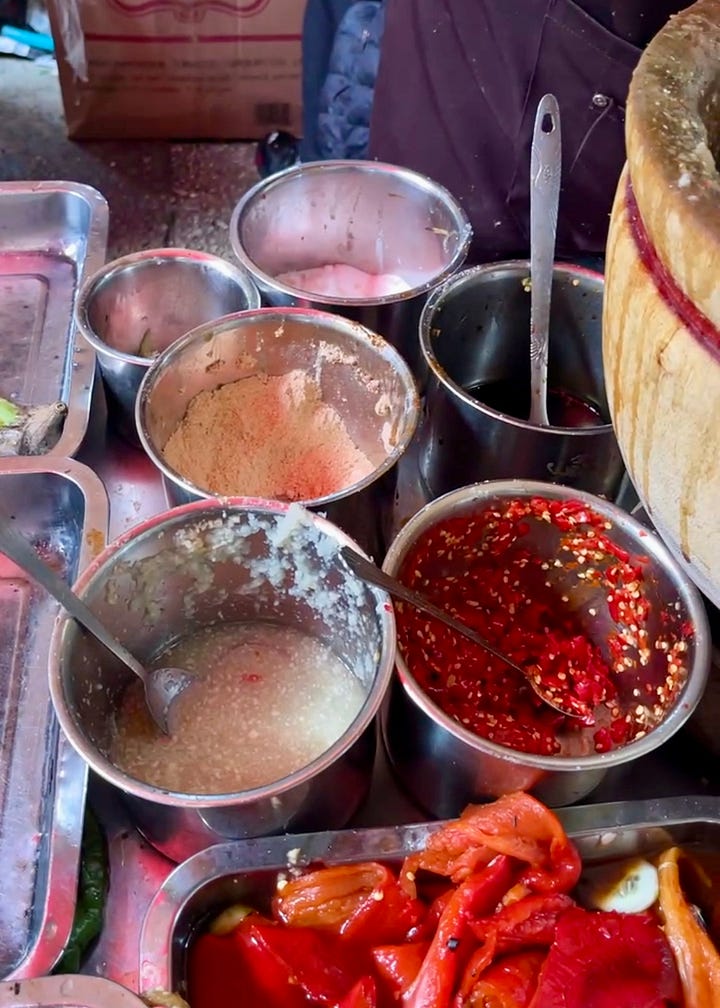
The seasonings aren’t that novel but they don’t need to be: sliced red onion, grilled red pepper (also snipped into pieces), cucumber, garlic, mint, chile paste, roasted soybean powder and a squeeze of lemon. Optional addition for 2 RMB: a century preserved egg (pi dan), pounded in. It’s fresh with a surprising kick of heat and everything I need.
Peach gum or peach resin (tao jiao 桃胶) dessert soup. A hydrating and skin-repairing ingredient said to increase collagen, peach gum is the hardened sap that oozes out from the bark of the Chinese mountain peach tree, dried into amber-colored clusters that resemble gemstones. Soaked overnight, the crystals swell up to eight times their original size, and all you need to do is simmer them for half an hour with a handful of rock sugar. They’re chewy like tapioca pearls with the slipperiness of snow fungus (yin-er 银耳).
For this batch we cooked the resin with Chinese honey locust fruit (zao jiao mi 皂角米)— they’re thickening and medicinal, like pearly white jellies— but you can also add papaya, pear, red dates, or lotus seeds. Chilled with oat milk in the summer is the way to go.
Fish fragrant eggplant. Recent additions: crisped up soy mince (dadou danbai 大豆蛋白, similar to TVP or textured vegetable protein), and a spoonful of pickled red chiles I bought from a local vendor.
3b. Gratuitous photo of lotus flowers at the market. I’ve seen them everywhere this summer, sold as bouquets.
Read Things I ate & cooked this week, part 1.
Some recent ferments:
In the summer I like pickling cucumbers with Sichuan peppercorns and bay leaves. To keep the cukes crisp I slice off their blossom ends and soak them first in ice water, then pack them into jars and cover with a 3% salt brine (7g salt, 1 cup / 240g water). Two to three days of fermentation in the summer is enough to get them fizzy and tart. Keep the jar in the fridge and drink the pickle juice (great after bike rides).


My neighbor gave me two bags of ume plums (qingmei 青梅) harvested from her courtyard a few weeks ago, and after snacking on a few I got a stomachache and decided to salt-preserve the rest. Traditionally, you rinse the tart green plums under water to rub off their surface fuzz, pluck out the stems with toothpicks, then air-dry and pack them into crocks with salt (500g plums with 60g salt, 一斤梅子三两盐), a method similar to making Japanese umeboshi.

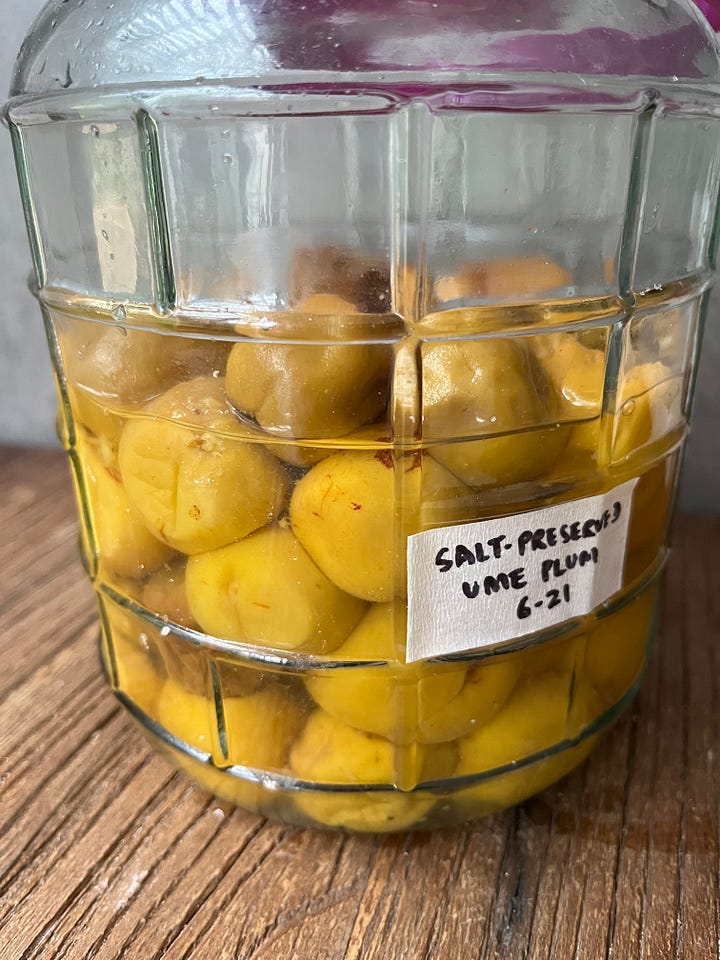
The wrinkled plums will continue to darken with age and are ready to eat in a few months to one year, although some say to wait six years, which requires patience and unimaginable permanence. In Chinese cooking, salt-preserved plums (yan meizi 腌梅子) are often stewed with fatty pork or fish. I’m planning to sun-dry mine and grind them into powder to use as a rice seasoning. The plums release a bracing liquid (aka ume vinegar) that’s magical for dressings and sauces.
You can also make qingmei jiu 青梅酒 or plum wine, another local favorite. Instead of preserving the ume plums with salt, you pack them with sugar (usually 50-80% the fruit’s weight), then submerge them with a colorless distilled liquor like baijiu, shochu or vodka (at least 35% ABV). Soak for a year, then strain out the fruit. The wine is enjoyed straight if you’re into that, diluted over ice, or mixed with soda water or tonic.
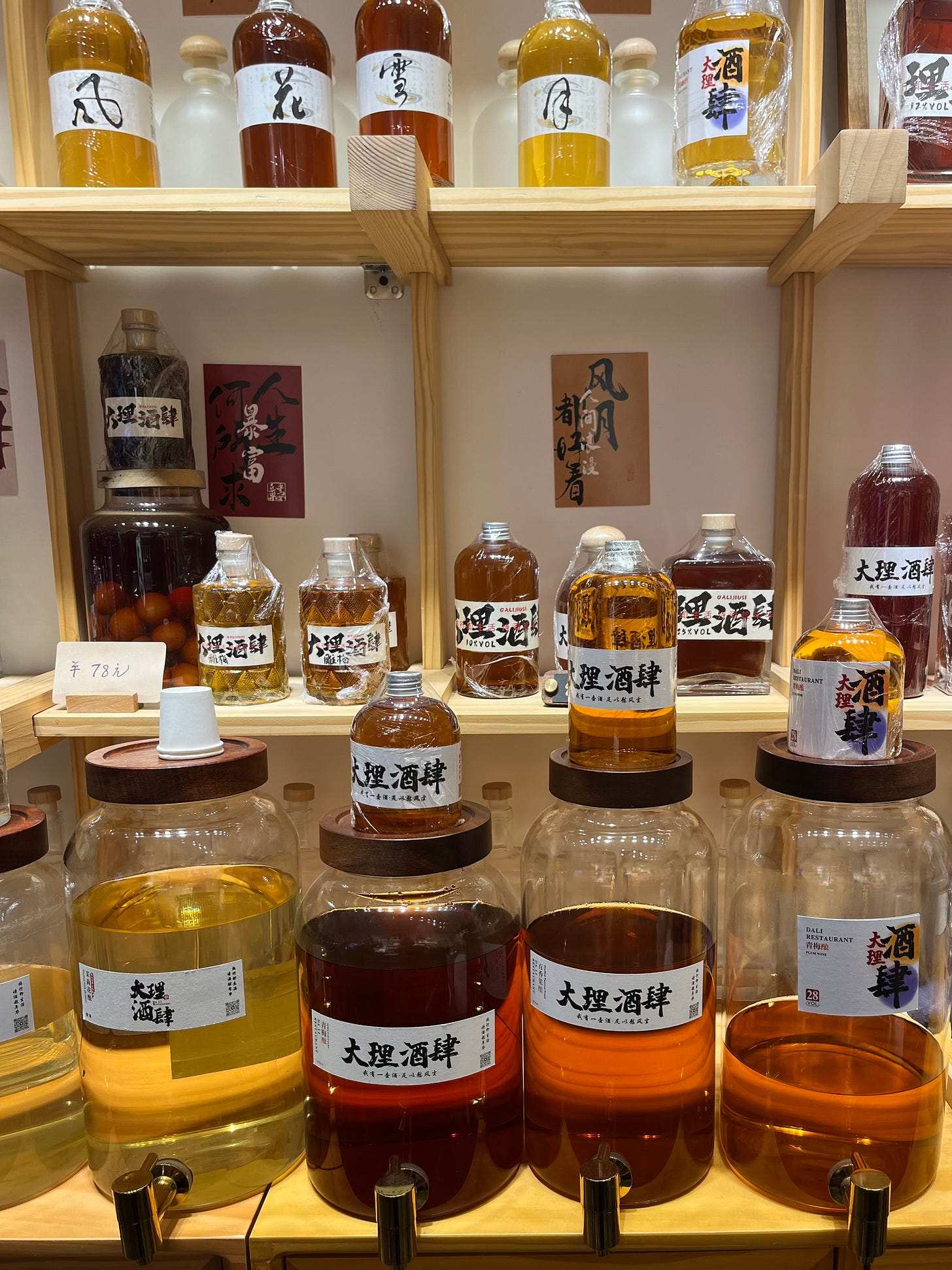
My kombucha SCOBY loves the summer temps in Dali— it’s been particularly fizzy as of late. I’m using Puerh-grown green tea, which yields a cleaner taste and prettier colors (and has a faster fermentation time than black tea). For my second ferment I’ve been adding any fruit that I have that’s less than prime: bruised peaches, soft grapes, kiwi, watermelon, and of course, my plums (ume).
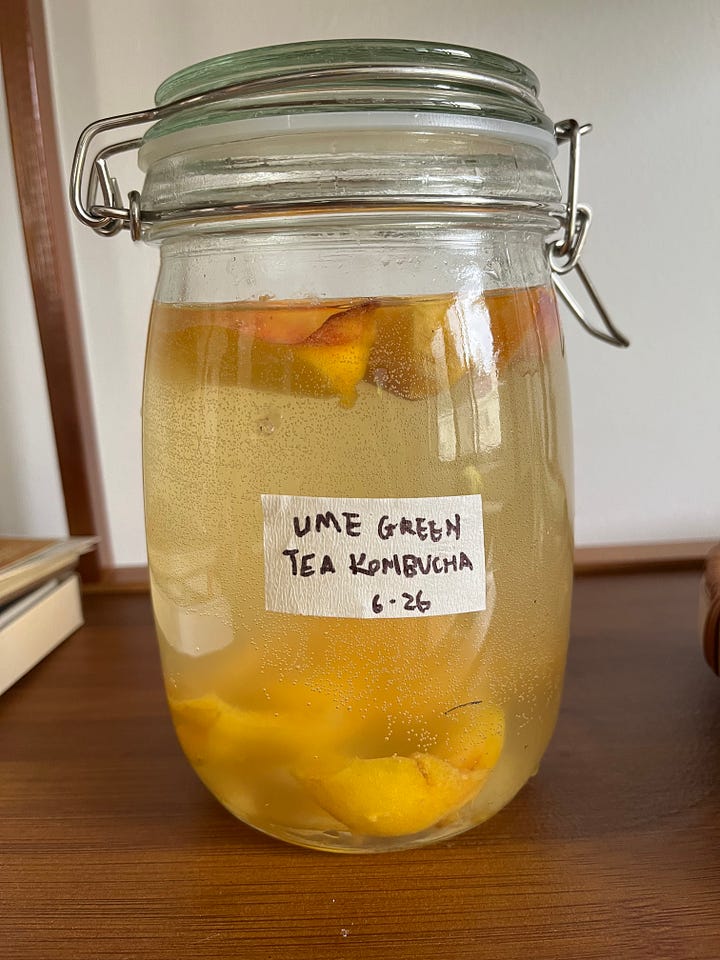
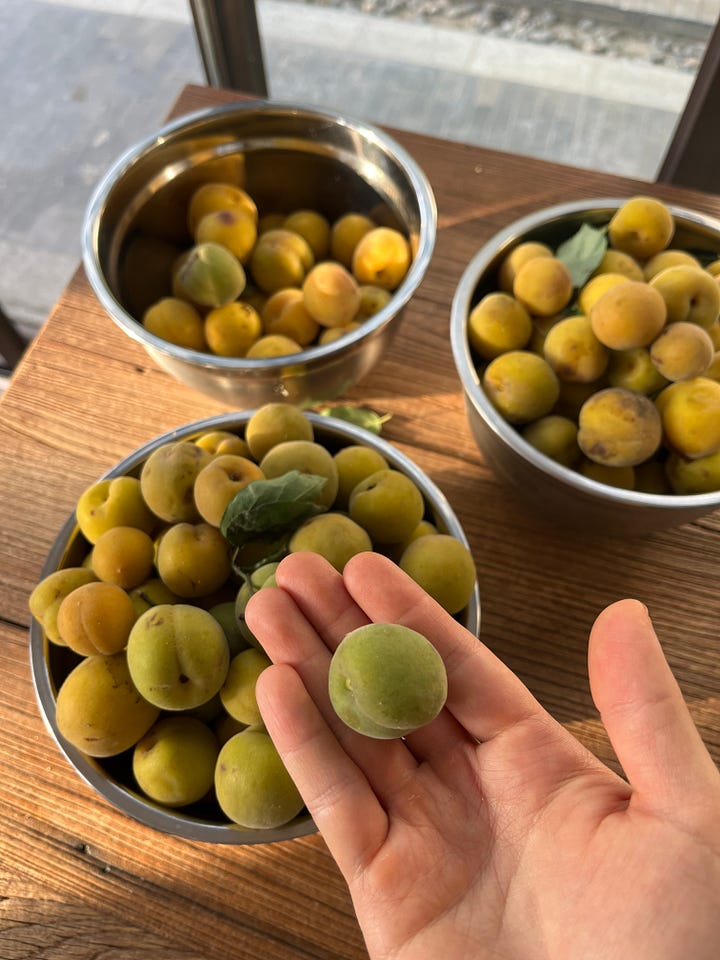

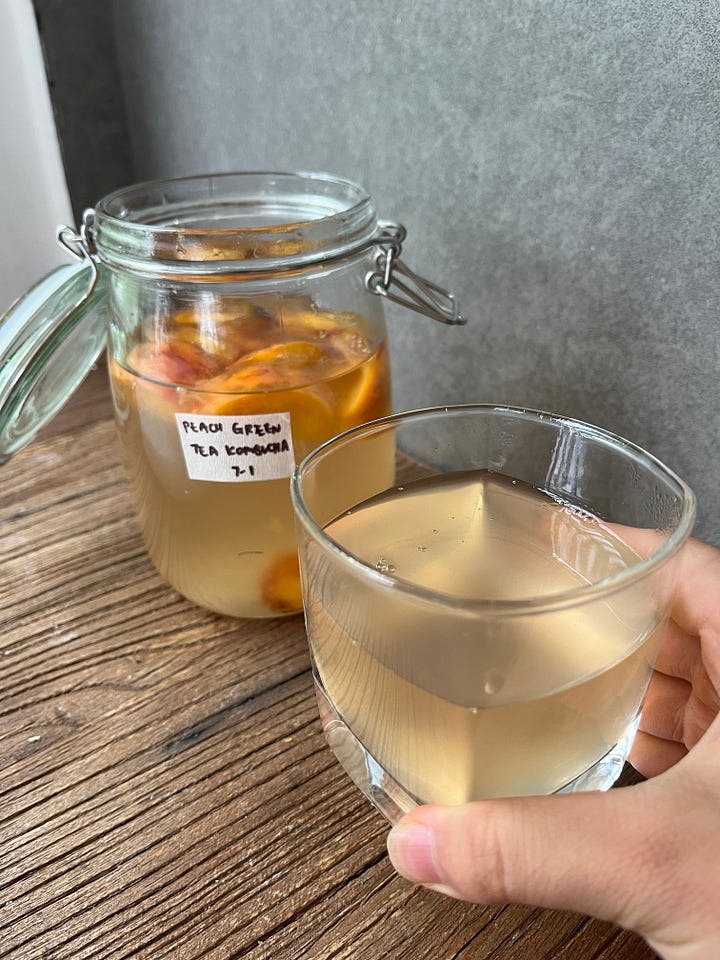
I also started a batch of tepache, a fizzy fermented drink made with pineapple rinds and cores (best part is you can still eat the pineapple, you simply utilize the discards). I used Chinese heitang, a dark unrefined and caramelly sugar close to Mexican piloncillo.
Fresh jujube dates. They’re mildly sweet and crunchy with a pearly green exterior that wrinkles into a glossy dark red skin when dried.
Vegetarian malatang (麻辣烫), skewers of thin shaved carrot, seaweed, wood-ear, broccoli, cauliflower, wintermelon, lotus root, potato, celtuce, and oyster mushrooms. In the back: fried tofu puffs, more mushrooms, tofu skin and smoked gandoufu.

Tangyuan (sticky rice baubles filled with black sesame) in chilled soy milk. This was a sweltering day, we were tired from walking and the restaurant was packed with sweaty bodies. When this dessert arrived it was pure relief. Chewy and cold and just sweet enough. You can see the tofu skin in the photo, the creamy scrim that forms on top of the soy milk.
A starter by my friend Luke at his pizza restaurant in Dali: whole cubed avocado, piled with arugula, sea grapes, good olive oil and very thinly shredded roasted nori. And ripe, bursting grape tomatoes.
菠萝饭, sticky rice with cubed pineapple, dried sultanas and preserved plums. The yellow glutinous rice is tinted with turmeric. Essentially babaofan but steamed in a pineapple half because it looks cool. This is another popular “Dai minority specialty” with dubious origins, but even if it’s a novelty it’s still delicious.
Thankgodforthe watermelon vendor who parks outside my apartment.

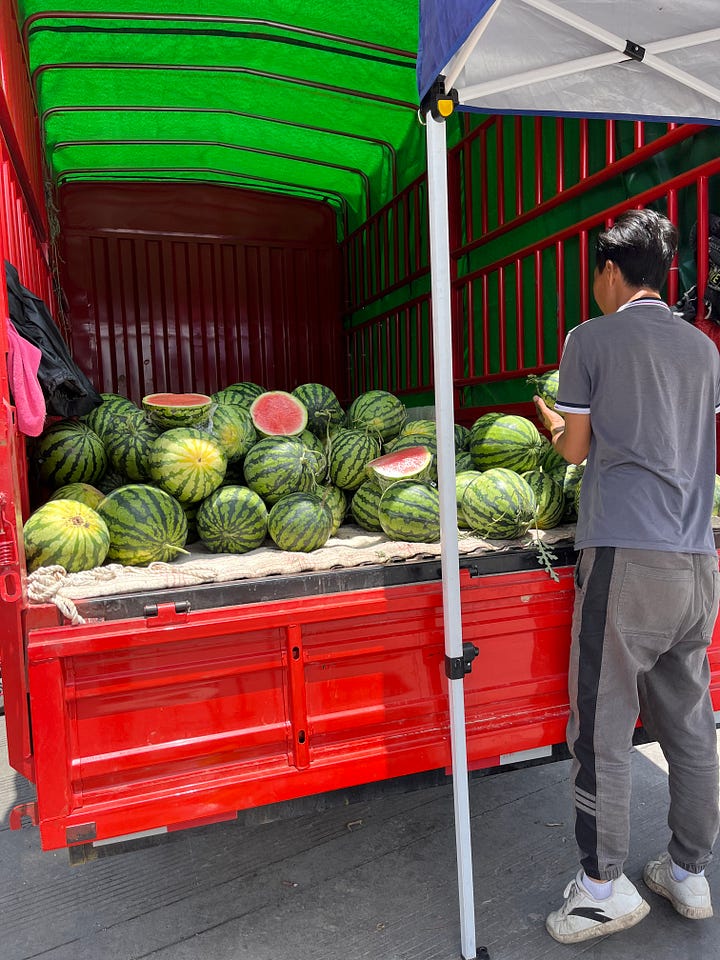


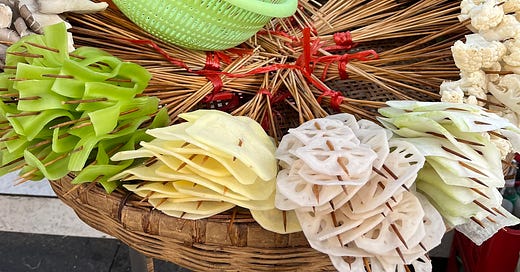



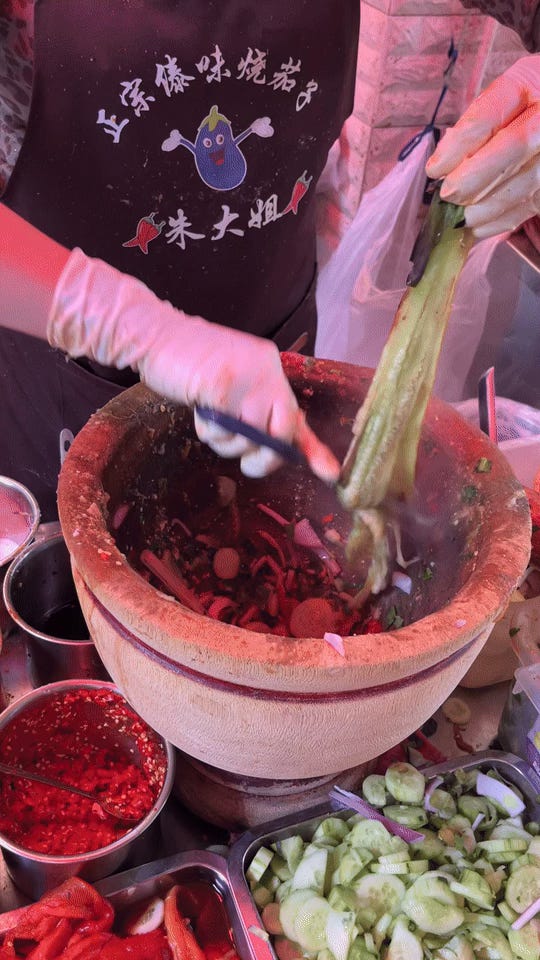
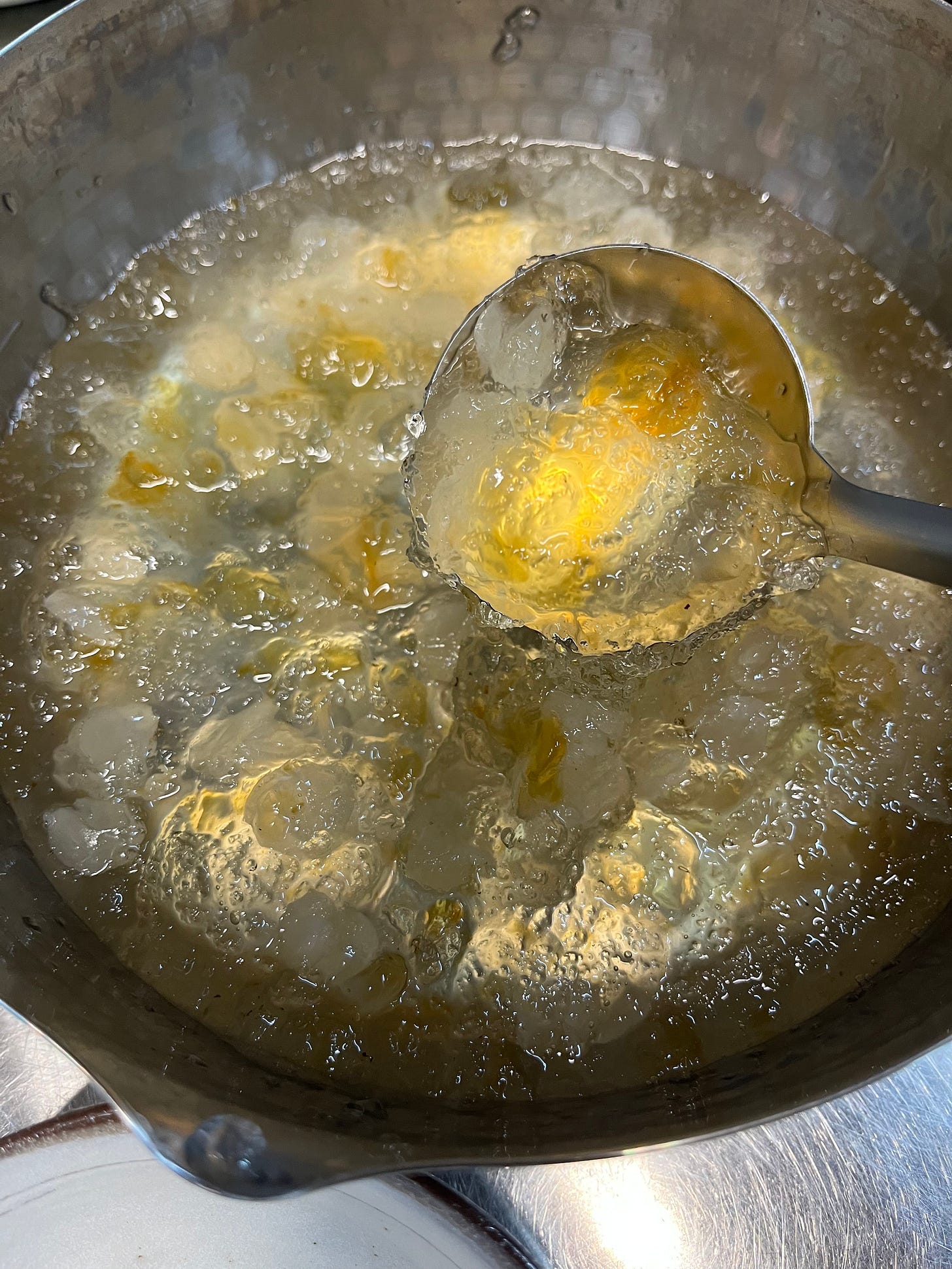

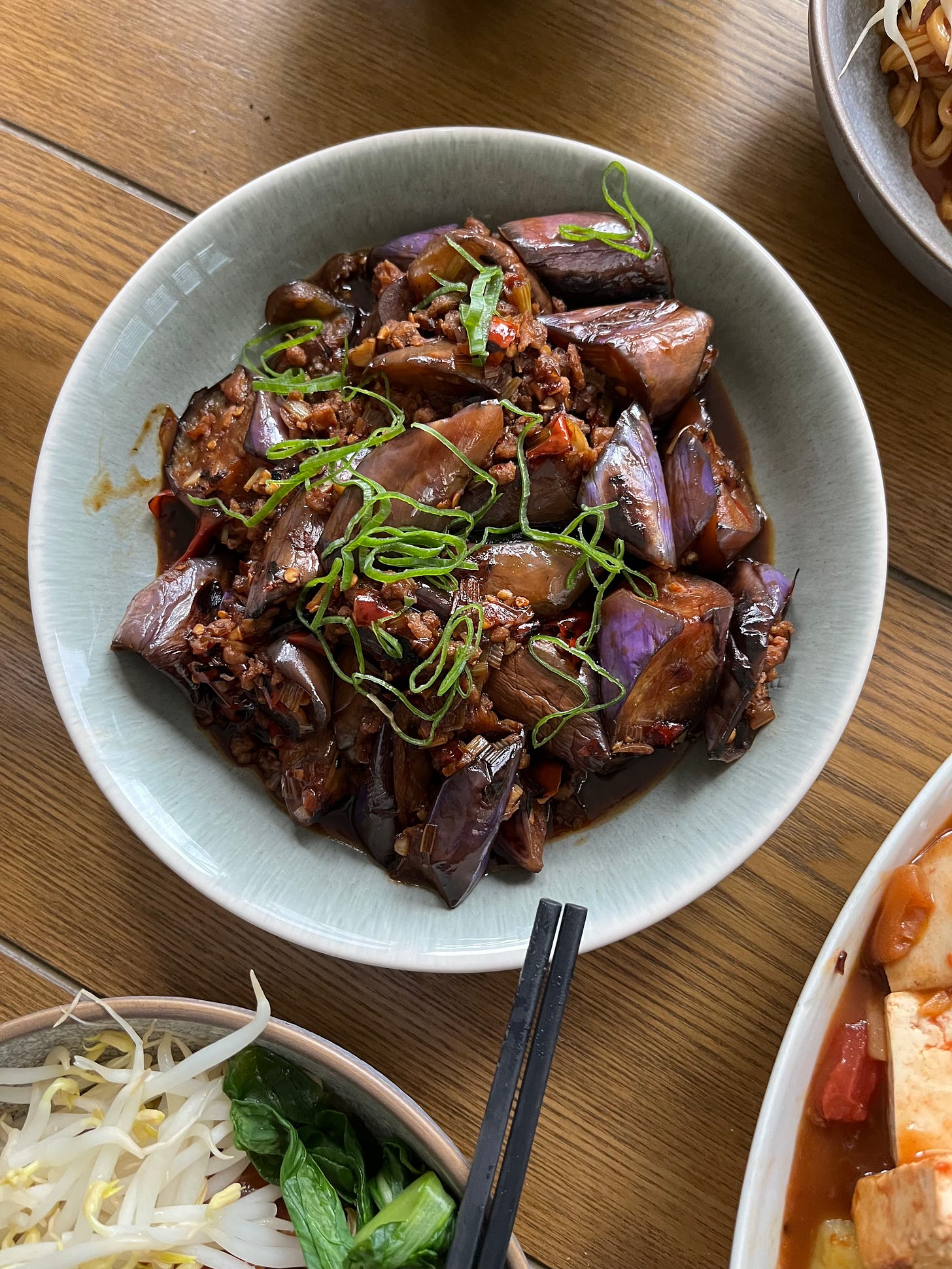
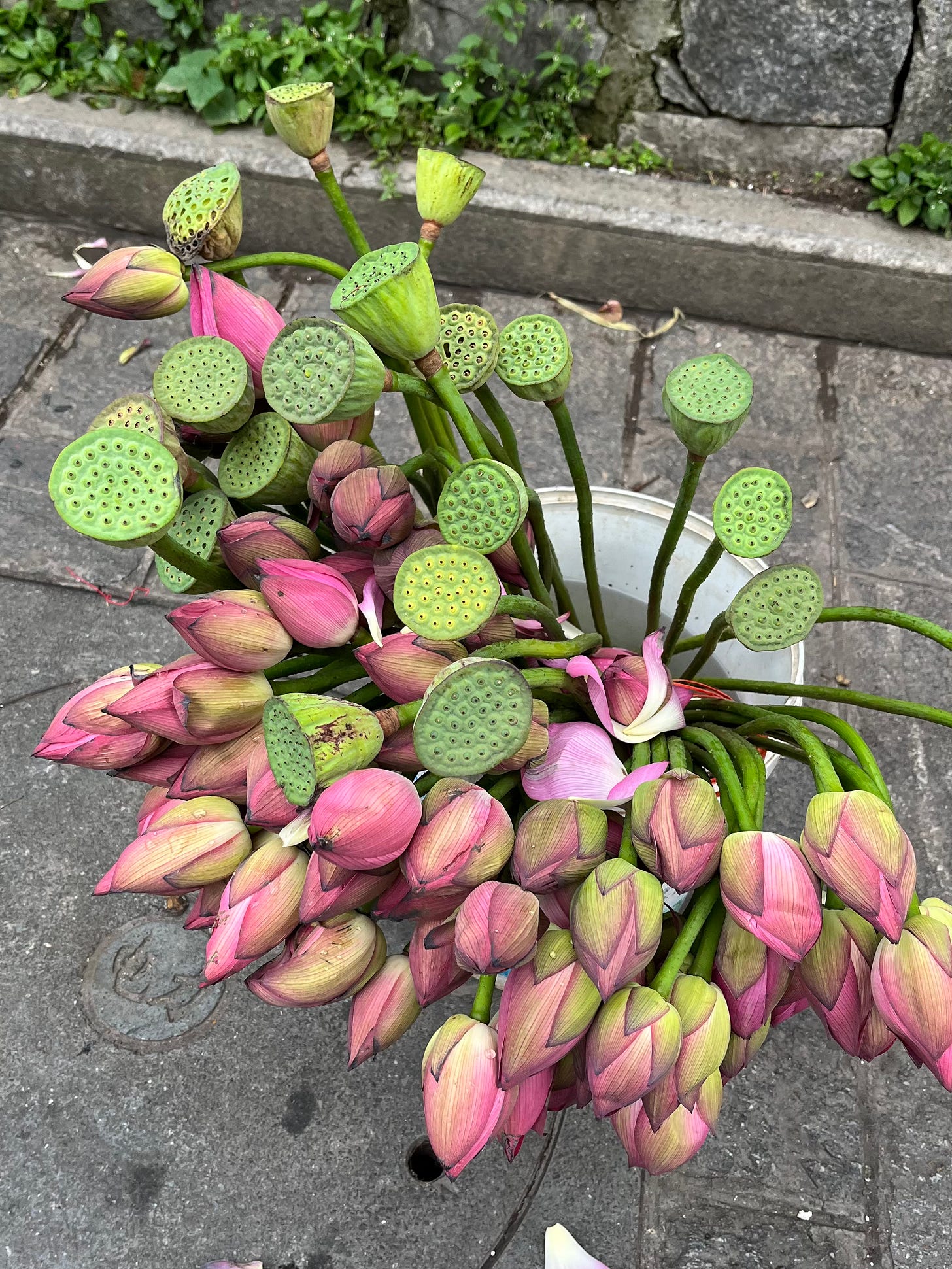







I'm really hoping to make it to Yunnan this year. Fingers crossed I'll be able find that aubergine stall!
Why does everything here look so delicious?! Also, as a huge fan of eggplant, I'm bookmarking this to try making it (or a version of it) in the future. And lastly, those vegetarian malatang skewers look so good!